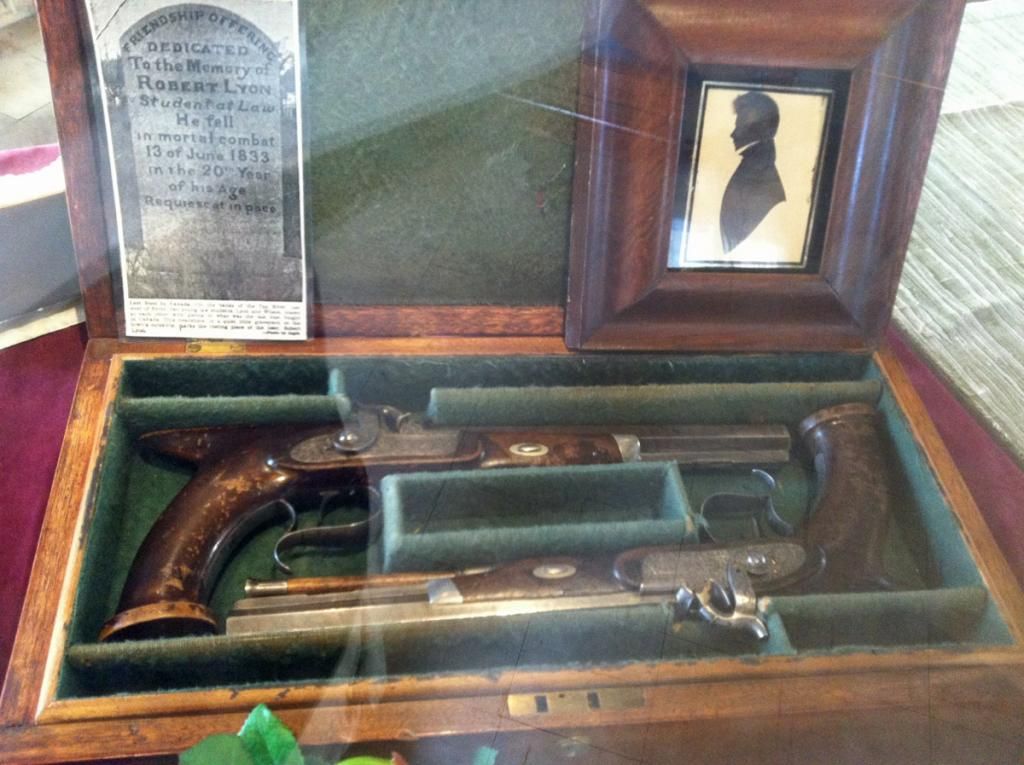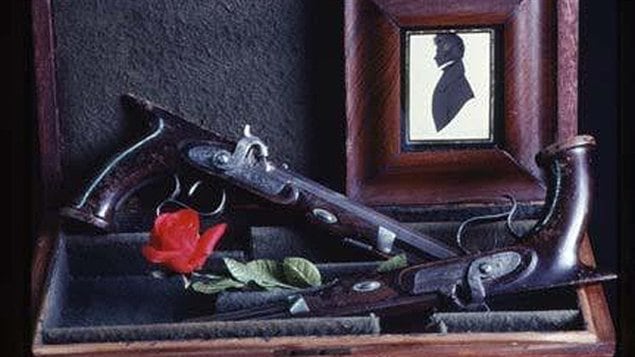Beretta-Skeet
Pilgrim
- Joined
- Jan 28, 2015
- Messages
- 2
- Reaction score
- 0
Hey folks,
Helping out a friend who's a reporter for the Ottawa Citizen. Since I have no knowledge of firearms from this era I was hoping someone here could give me a hand. I work in the firearms industry, but the only muzzleloading knowledge I have is of new production models. Any help would be appreciated.
Also, this duel happened in 1833 just south west of Ottawa Canada to give a time frame.
The email he sent to me was the following:
"I was wondering if you can help me out with a story I'm doing for the Citizen about the Last Duel in Perth.
We would like to possibly recreate the event using the type of pistols they used, of which the originals are in a museum. The museum doesn't have any ID about the type of gun they are, so I wondered if you, or your colleagues could help ID them.
I have attached a pic and I think they are American Saw Handled Dueling Pistols. Are they are .60 caliber, smooth bore with single set triggers? Percussion, they are from 1833.
They are similar to British TJ Mortimer ones of that era, but seem closer to the American ones."
Unfortunately this is all the information he could give me. I wasn't there with him otherwise I would have noted the proof marks.

Helping out a friend who's a reporter for the Ottawa Citizen. Since I have no knowledge of firearms from this era I was hoping someone here could give me a hand. I work in the firearms industry, but the only muzzleloading knowledge I have is of new production models. Any help would be appreciated.
Also, this duel happened in 1833 just south west of Ottawa Canada to give a time frame.
The email he sent to me was the following:
"I was wondering if you can help me out with a story I'm doing for the Citizen about the Last Duel in Perth.
We would like to possibly recreate the event using the type of pistols they used, of which the originals are in a museum. The museum doesn't have any ID about the type of gun they are, so I wondered if you, or your colleagues could help ID them.
I have attached a pic and I think they are American Saw Handled Dueling Pistols. Are they are .60 caliber, smooth bore with single set triggers? Percussion, they are from 1833.
They are similar to British TJ Mortimer ones of that era, but seem closer to the American ones."
Unfortunately this is all the information he could give me. I wasn't there with him otherwise I would have noted the proof marks.






